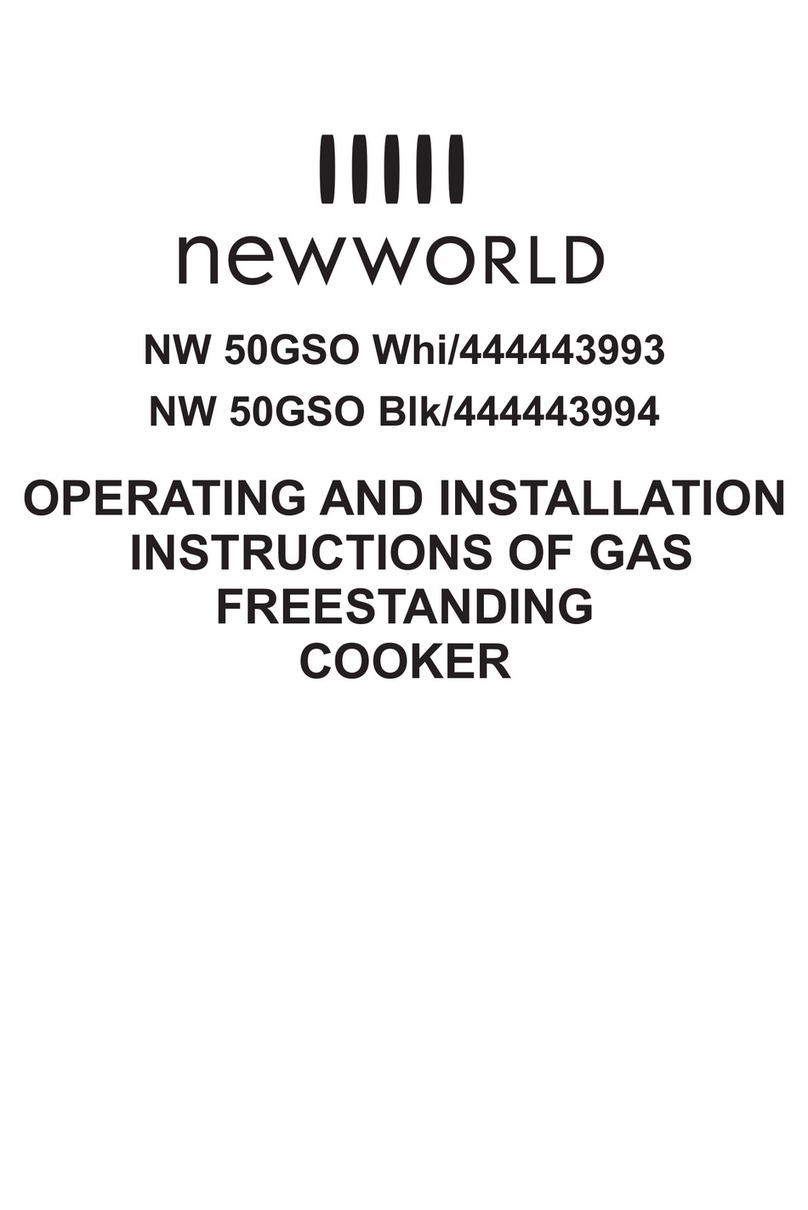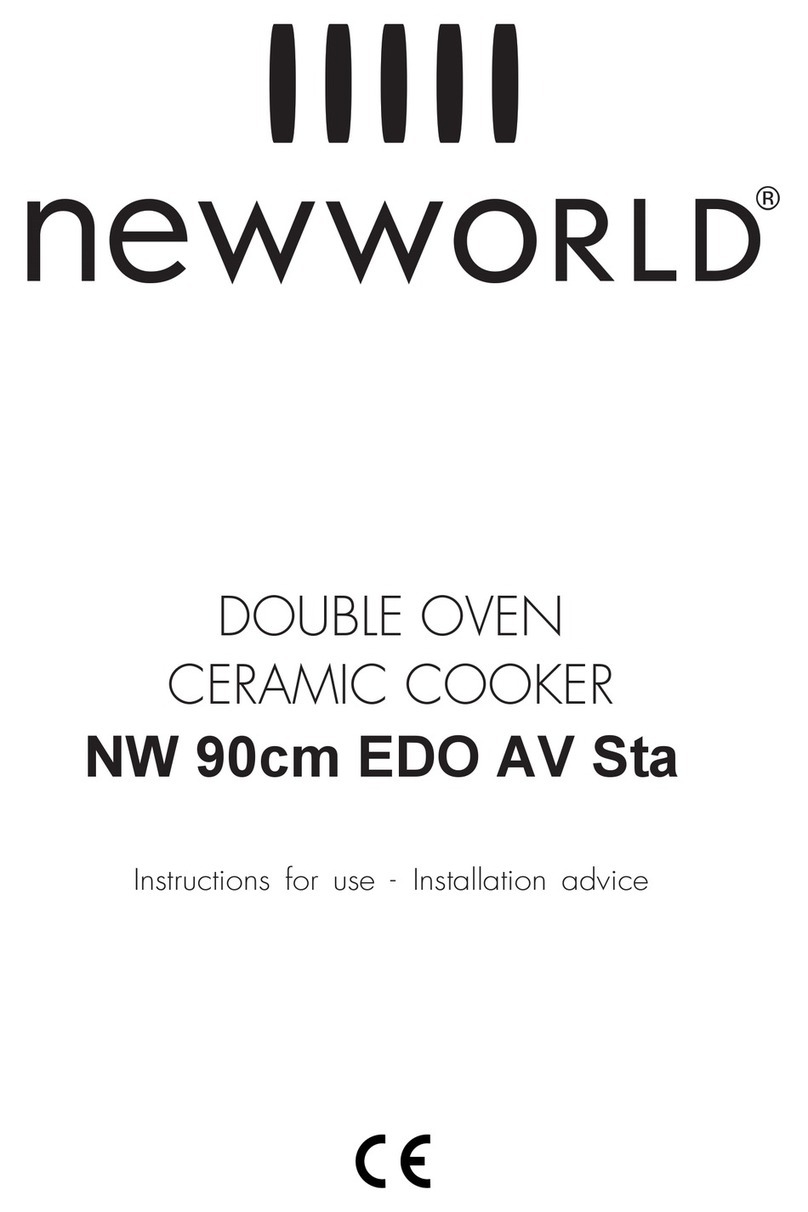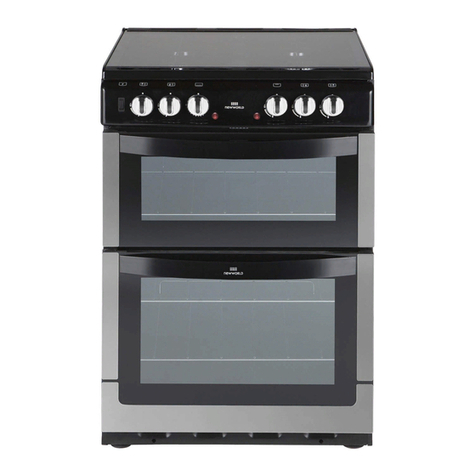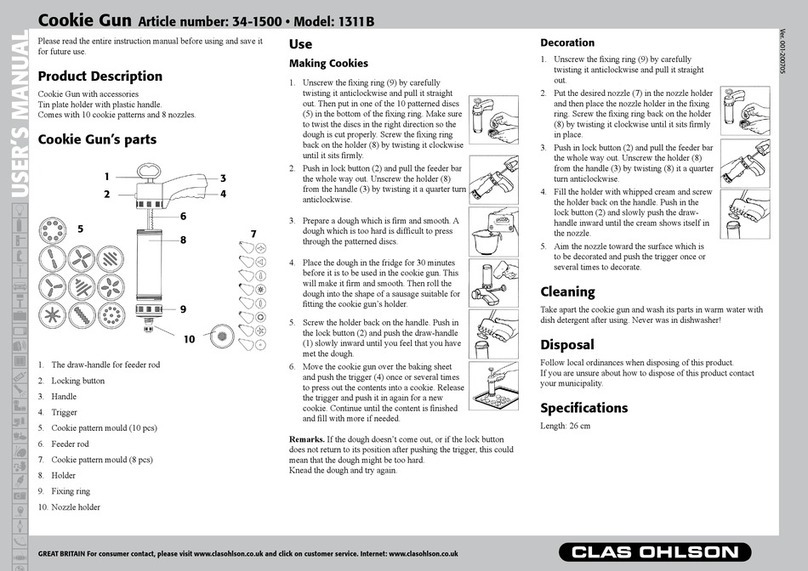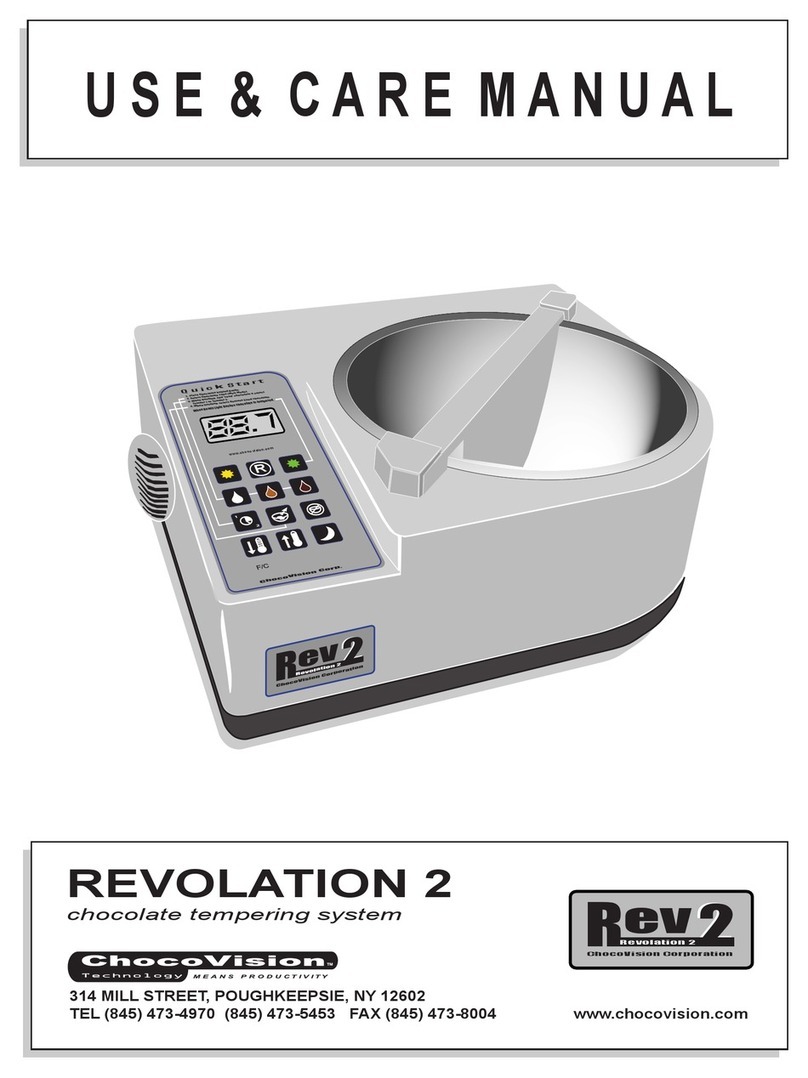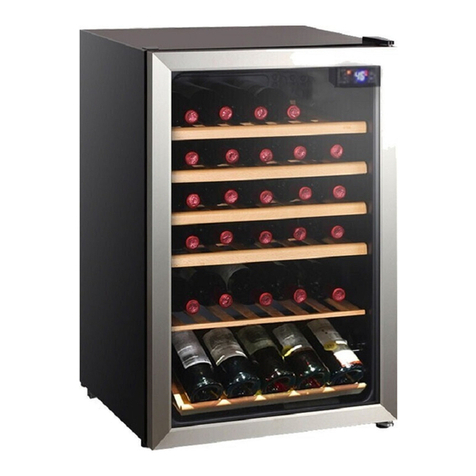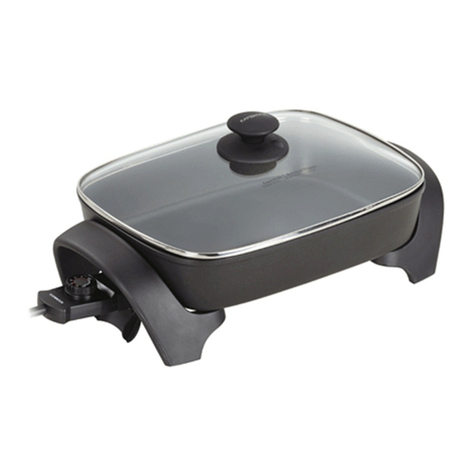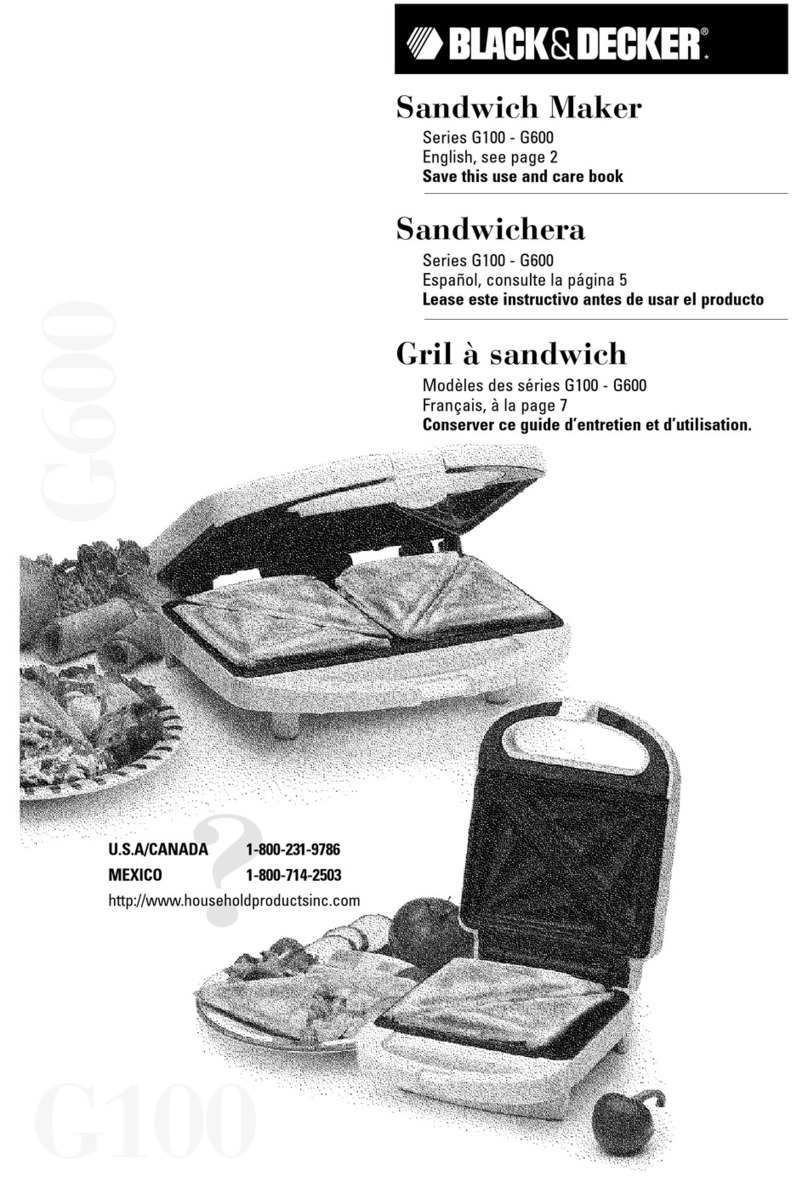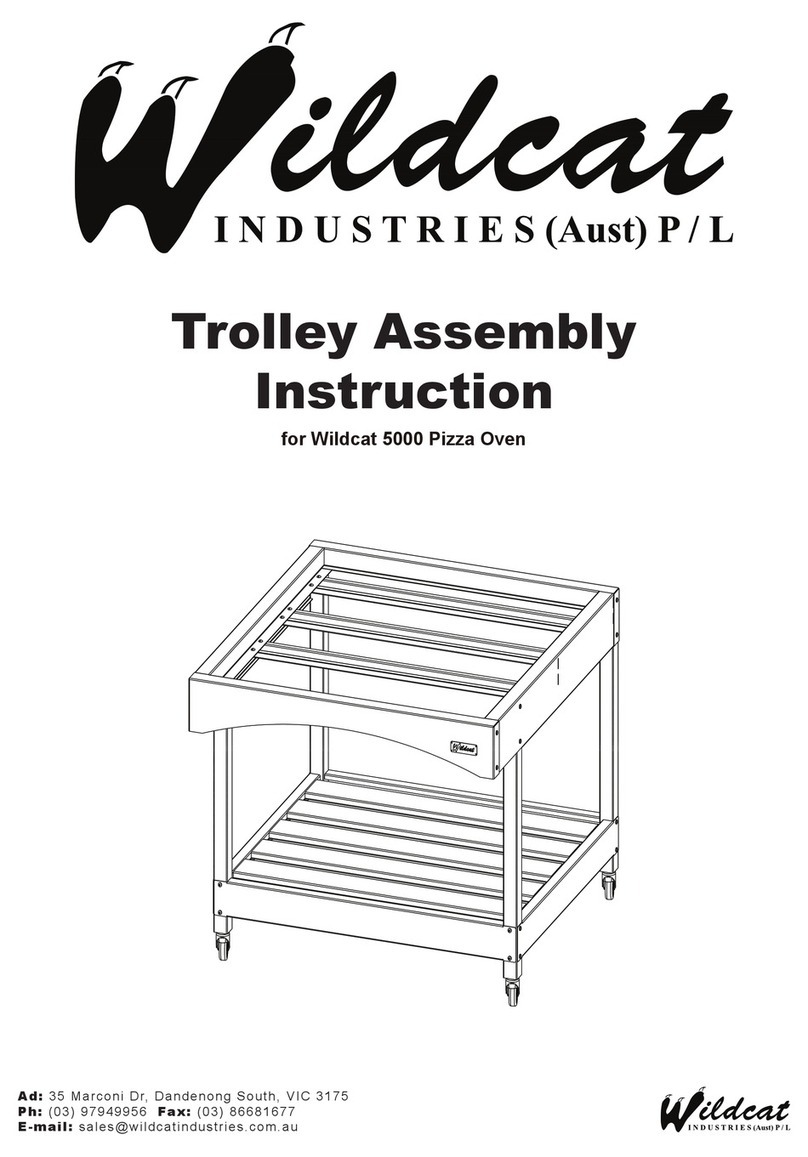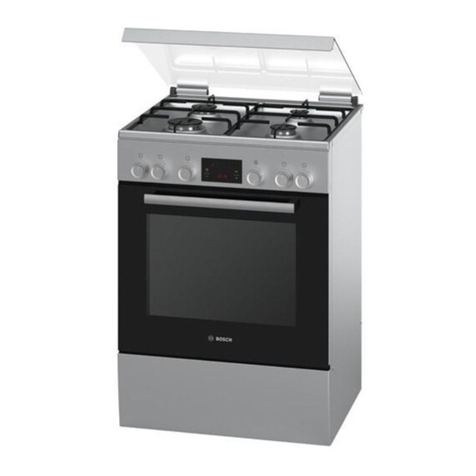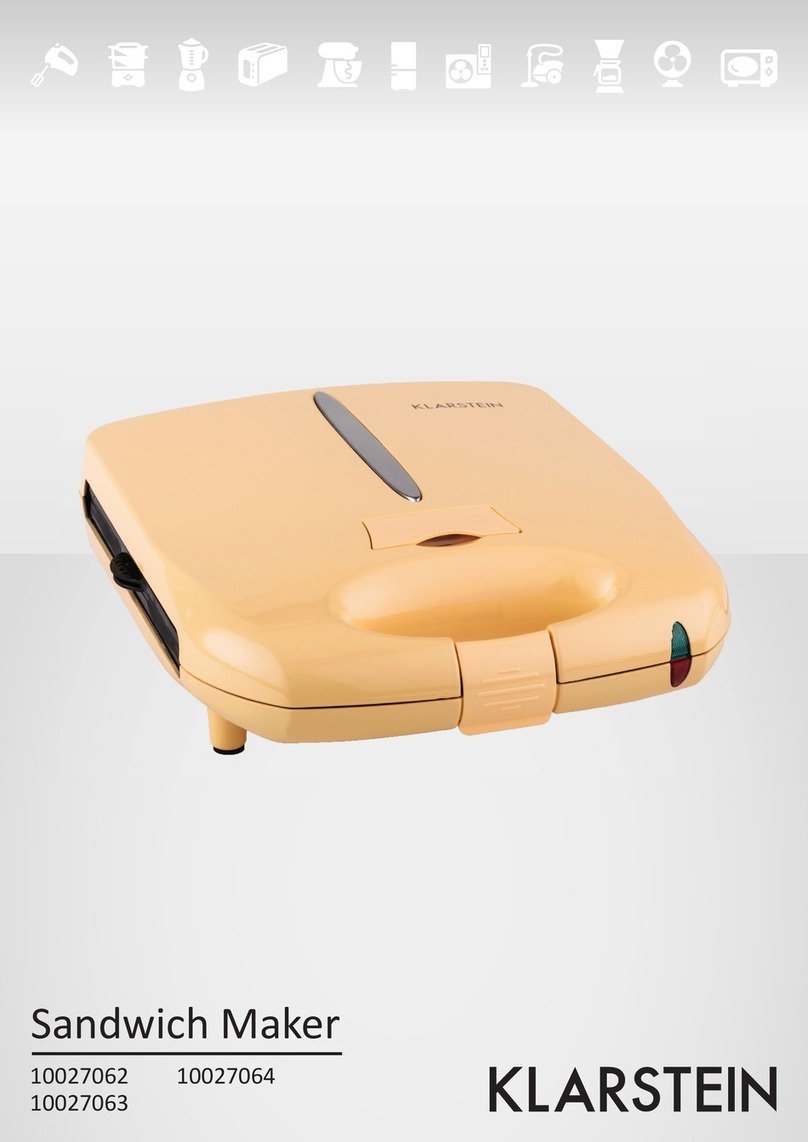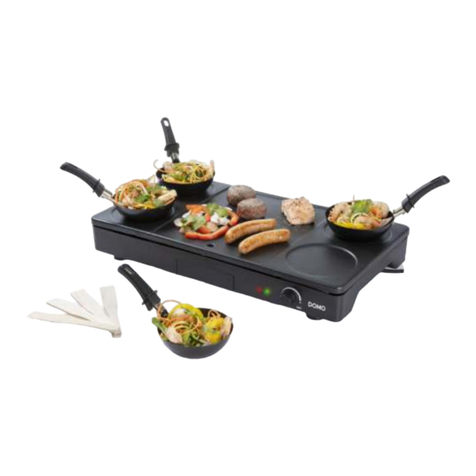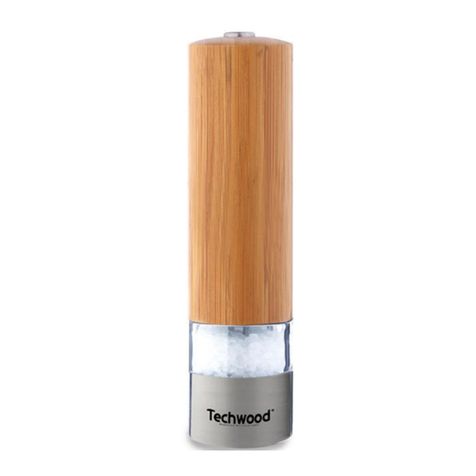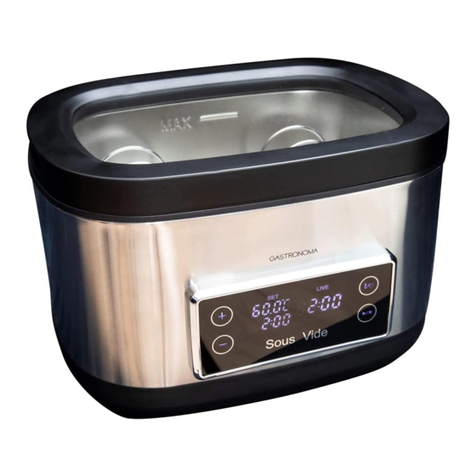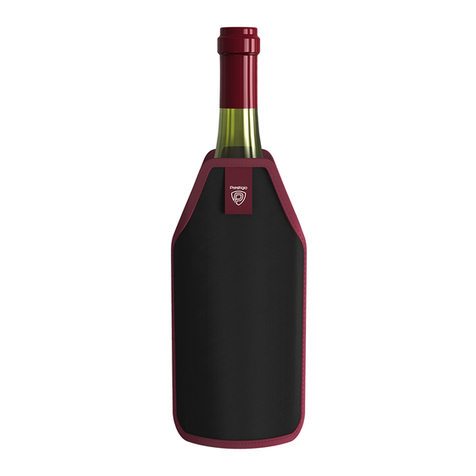New World NW 90GTDO Installation and operating instructions

Instructions for use
-
Installation advice
DOUBLE OVEN
GAS COOKER
NW 90GTDO
GB

Read the instructions carefully before installing and using the appliance.
CAUTION: this appliance must only be installed in a permanently ventilated room in
compliance with the applicable regulations.
Customer Care number: 0844 815 3747
Dear Customer,
Thank you for purchasing a NEW WORLD Double Oven Gas
Cooker.
The safe y precau ions and recommenda ions in hese ins ruc ions
are for your own safe y and ha of o hers. They will also provide a
means by which o make full use of he fea ures offered by your
appliance.
Please keep his bookle in a safe place. I may be useful in he
fu ure, ei her o yourself or o o hers in he even ha doub s
should arise rela ing o i s opera ion.
This appliance must be used only for its intended purpose , that
is for the domestic cooking of foodstuffs. Any other form of usage
is to be considered as inappropriate and therefore dangerous.
The manufacturer declines all responsibility in the event of
damage caused by improper, incorrect or illogical use of the
appliance.
2
This cooker has been designed, constructed and marketed in compliance with:
- Safety requirements of EEC Directive “Gas” 2009/142/EC;
- Safety requirements of EU Directive "Low Voltage" 2006/95/EC;
- Protection requirements of EU Directive “EMC” 2004/108/EC;
- Requirements of EU Directive 93/68/EEC.
GB

3
Important:
This appliance is designed and manufactured solely for the cooking of domestic
(household) food and is not suitable for any non domestic application and therefore
should not be used in a commercial environment.
The appliance guarantee will be void if the appliance is used within a non domestic
environment i.e. a semi commercial, commercial or communal environment.
FIRST USE OF THE OVENS
Follow the instructions below:
– Furnish the interior of the ovens by placing the wire racks as described in “Cleaning and
maintenance”.
– Insert shelves and tray.
– Switch the empty ovens on to max to eliminate grease from the heating elements.
– Let the ovens cool down and clean the interior of the ovens with a cloth soaked in water
and neutral detergent, then dry carefully.
IMPORTANT INSTRUCTIONS AND ADVICE FOR THE USE OF ELECTRICAL
APPLIANCES
The use of any electrical appliance requires the compliance with some basic rules,
namely:
– do not touch the appliance with wet or damp hands (or feet)
– do not use the appliance whilst in bare feet
– do not allow the appliance to be operated by children or unqualified persons without
supervision.
The manufacturer cannot be deemed responsible for damages caused by wrong or
incorrect use.

4
IMPORTANT SAFEGUARDS AND RECOMMENDATIONS
After unpacking the appliance, check to ensure that it is not damaged and that the oven
doors close correctly. If in doubt, do not use and consult your supplier or a professional-
ly qualified technician.
Packing materials (i.e. plastic bags, polystyrene foam, nails, packing straps, etc.) should
not be left around within easy reach of children, as these may cause serious injuries.
• ATTENTION: please peel plastic cover off both sides and front of the appliance
before use.
• Do not attempt to modify the technical characteristics of the appliance as this may
cause danger to users.
• Do not carry out any cleaning or maintenance operations on the appliance without
first disconnecting it from the electric power supply.
• If you should decide not to use this appliance any longer (or decide to substitute an
older model), before disposing of it, it is recommended that it is made inoperative in
an appropriate manner in accordance to health and environmental protection regula-
tions, ensuring in particular that all potentially hazardous parts be made harmless,
especially in relation to children who could play with unused appliances.
• After use, always ensure that the control knobs are in the off position.
• ousehold appliances are not intended to be played with by children.
• Keep children away from the appliance during use.
• Children, or persons with a disability which limits their ability to use the appliance,
should have a responsible person to instruct them in its use. The instructor should be
satisfied that they can use the appliance without danger to themselves or their sur-
roundings.
• During and after use of the cooker, certain parts will become very hot. Do not touch
hot parts.
• Some appliances are supplied with a protective film on steel and aluminium parts.
This film must be removed before using the appliance.

5
• WARNING
When correctly installed, your product meets all safety requirements laid down for
this type of product category. owever special care should be taken around the rear
or the underneath of the appliance as these areas are not designed or intended to be
touched and may contain sharp or rough edges, that may cause injury.
• Fire risk! Do not store flammable material in the ovens or in the storage compart-
ment.
• Make sure that electrical cords connecting other appliances in the proximity of the
cooker cannot come into contact with the hob or become entrapped in the oven
doors.
• Do not line the oven walls with aluminium foil. Do not place baking trays or the drip
tray on the base of the oven chamber.
• The manufacturer declines all liability for injury to persons or damage to property
caused by incorrect or improper use of the appliance.
• The various components of the appliance are recyclable. Dispose of them in accor-
dance with the regulations in force in your country. If the appliance is to be scrapped,
remove the power cord.
• Always use oven gloves when removing the shelves and food trays from the oven
whilst hot.
• Do not hang towels, dishcloths or other items on the cooker or its handle – as this
could be a fire hazard.
• Clean the oven regularly and do not allow fat or oils to build up in the oven base or
trays. Remove spillages as soon as they occur.
• Do not stand on the cooker or on the open oven doors.
• Always stand back from the cooker when opening the oven door to allow steam and
hot air to escape before removing the food.
• Important: This appliance has been designed for domestic use only.
The appliance is not suitable for use within a semi-commercial, commercial or com-
munal environment.

6
COOKING HOB
Fig. 1.1
2
4
2
1
3
GAS BURNERS
1. Auxiliary burner (A) 1,00 kW
2. Semi-rapid burner (SR) 1,75 kW
3. Rapid burner (R) 3,00 kW
4. Triple-ring burner (TR) 3,50 kW
Important Note:
The electric ignition is incorporated in the knobs.
The appliance has a safety valve system fitted, the flow of gas will be stopped if and
when the flame should accidentally go out.
1
1

7
CONTROL PANEL
CONTROL PANEL - Controls description
1. Left main oven - Gas oven/gas grill control knob
2. Electronic clock
3. Front left burner control knob
4. Rear left burner control knob
5. Central burner control knob
6. Rear right burner control knob
7. Front right burner control knob
8. Right small oven - Gas oven control knob
2
2
Fig. 2.1
9
7
5
3
1
2
4
689
7
5
3
1
2
4
68
134
567
28

8
USE OF COOKING HOB
3
3
Fig. 3.1
- The maximum aperture position per-
mits rapid boiling of liquids, whereas
the minimum aperture position allows
slower warming of food or maintain-
ing boiling conditions of liquids.
- To reduce the gas flow to minimum,
rotate the knob further anti-clockwise
to the small flame symbol.
- Other intermediate operating adjust-
ments can be achieved by positioning
the indicator between the maximum
and minimum aperture positions, and
never between the maximum aper-
ture and closed positions.
GAS BURNERS
Each burner is controlled by a gas tap
which opens and closes the gas supply.
Turning the knob so that the indicator
line points to the symbols printed on the
panel achieves the following functions:
– symbol ●: off
– symbol : full on (nominal rate)
– symbol : reduced rate
N.B. When the cooker is not being
used, set the gas knobs to their closed
positions and also close the cock valve
on the gas bottle or the main gas supply
line.
Caution!
the cooking hob becomes very hot
during operation.
Keep children well out of reach.

9
CHOICE OF THE BURNER
On the control panel, near each knob,
there is a diagram that indicates which
burner is controlled by that knob.
Select the burner that is most suitable
for the diameter and capacity of the pan
to be used.
As an indication, the burners and the
pans must be used in the following way:
It is important that the base diameter of
the pot is at least the same diameter as
the burner ring to obtain an efficient
heat transfer.
Always position pans centrally over the
burners.
Adjust the size of the flame so that it
does not lick up the side of the pan.
Position pan handles so that they
cannot be accidentally knocked.
Fig. 3.3
BURNERS POT DIAMETER
Auxiliary 12 - 14 cm
Semi-rapid 16 - 24 cm
Rapid 24 - 26 cm
Triple-ring 26 - 28 cm
do not use pans with concave or convex bases
Fig. 3.2
LIGHTING GAS BURNERS FITTED
WITH SAFETY VALVE DEVICE
To ignite the burner, the following
instructions are to be followed:
1) Press in the corresponding knob and
turn counter-clockwise (fig. 3.2) to
the full flame position marked by the
symbol (fig. 3.1) and hold the
knob in until the flame has been lit.
In the case of a mains failure light the
burner with a match or lighted taper.
2) Wait for about ten seconds after the
gas burner has been lit before letting
go of the knob (valve activation
delay).
3) Adjust the gas valve to the desired
position.
If the burner flame should go out for
some reason, the safety valve will auto-
matically stop the gas flow.
To re-light the burner, return the knob to
the closed ●position, wait for at least
1 minute and then repeat the lighting
procedure.
If your local gas supply makes it difficult
to light the burner with the knob set to
maximum, set the knob to minimum and
repeat the operation.

10
Attention: the oven door becomes
very hot during operation.
Keep children away.
GENERAL FEATURES
It is advisable, upon first use, to turn the
oven on to the maximum temperature
(position 9) to eliminate possible
traces of grease from the oven burner.
The same operation should be followed
for the grill burner.
The gas oven is provided with two
burners:
a) Oven burner, mounted on the lower
part of the oven (wattage: 3,70 kW)
b) Grill burner, mounted on the upper
part of the oven (wattage: 2,50 kW).
OVEN BURNER
This burner carries out the normal
“oven cooking”. The gas flow to the
burner is regulated by a thermostat
which maintains the oven at a constant
temperature.
The temperature of the oven is con-
trolled by a thermostatic probe posi-
tioned inside the oven.
The probe must always be kept in its
housing, in a clean condition, as an
incorrect position or encrustment may
cause an alteration in the control of the
temperature.
WARNING:
The door is hot, use the handle.
During use the appliance becomes hot.
Care should be taken to avoid touching
heating elements inside the oven.
TEMPERATURE CONTROL
The temperature knob is numbered from
1to 9(fig. 4.1) indicating the increas-
ing oven temperature value (see table
4.2).
The thermostat which regulates the flow
of gas to the oven burner has a safety
valve which automatically shuts off the
gas supply when the flame goes out.
The temperature is kept constant on the
regulated value.
9
7
5
3
1
2
4
68
Fig. 4.1
LEFT MAIN GAS OVEN
4
4
Table 4.2
TEMPERATURE CHART
Gas Mark Oven temperature
1 130 °C
2 140 °C
3 155 °C
4 165 °C
5 180 °C
6 190 °C
7 205 °C
8 215 °C
9 230 °C

11
IGNITION OF THE OVEN BURNER
1) Open the oven door to the full
extent.
WARNING: Risk of explosion! The
oven door must be open during this
operation.
2) Lightly press and turn the temperature
knob anti-clockwise (fig. 4.3) to the max
position (
9
fig. 4.1).
3) Press the knob firmly until the burner
lights.
Never continue this operation for
more than 15 seconds. If the burner
has still not ignited, wait for about 1
minute prior to repeating the ignition.
In case of mains failure, press the
knob firmly and immediately put a lit
match or taper to the opening “F”
(fig. 4.4).
4) Wait about 10/15 seconds after the
burner lights before releasing the
knob (time to prime the valve).
5) Close the oven door slowly and
adjust the burner according to the
power required.
If the flame extinguishes for any reason,
the safety valve will automatically shut
off the gas supply to the burner.
To re-light the burner, first turn the oven
control knob to position ●, wait for at
least 1 minute and then repeat the
lighting procedure.
Fig. 4.4
F
Fig. 4.3
OVEN COOKING
For efficient oven preheating, we rec-
ommend that grill trays and racks are
removed from the oven and replaced
after about 15 minutes.
Before introducing the food, preheat the
oven to the desired temperature.
For a correct preheating operation, it is
advisable to remove the tray from the
oven and introduce it together with the
food, when the oven has reached the
desired temperature.
Check the cooking time and turn off the
oven 5 minutes before the theoretical
time to recuperate the stored heat.
OVEN LIGHT
The oven is equipped with a Iight that
illuminates the oven to enable visually
controlling the food that is cooking.
This light is controlled by the oven/grill
control knob (fig. 4.1)
It remains on in all the cooking modes.

12
IGNITION OF THE GRILL BURNER
Fig. 4.5
IMPORTANT: the grill must always
be used with the oven door ajar and
with shield "A” mounted (fig. 4.7).
Do not grill with the oven door
closed.
Attention: the oven door becomes
very hot during operation.
Keep children away.
WARNING. The heat shield and the
oven door reach a very high tem-
perature whilst in use.
Fig. 4.6
If the flame extinguishes for any reason,
the safety valve will automatically shut
off the gas supply to the burner.
To re-light the burner, first turn the oven
control knob to position ●, wait for at
least 1 minute and then repeat the
lighting procedure.
1) Open the oven door to the full
extent.
WARNING: Risk of explosion!
The
oven door must be open during this
operation.
2) Lightly press and turn the tempera-
ture knob clockwise (fig. 4.5) to the
position (fig. 4.1).
3) Press the knob firmly until the burner
lights.
Never continue this operation for
more than 15 seconds. If the burn-
er has still not ignited, wait for
about 1 minute prior to repeating
the ignition.
In case of mains failure, press the
knob firmly and put a lit match or taper
to the pipe of the burner (fig. 4.6).
4) After lighting the burner, wait a few
seconds before releasing the knob
(until the safety valve stays open).
Do not close the oven door com-
pletely. The grill must always be used
with the oven door slightly open and
with shield "A” mounted (Fig. 4.7).
See specific instructions in the sec-
tion ‘USE OF T E GRILL’.

13
USE OF THE GRILL
Very important: the grill must always
be used with the oven door slightly
open and with shield "A” mounted
(Fig. 4.7).
Mount shield “A” which serves to pro-
tect the control panel from the heat.
Turn on the grill, as explained in the pre-
ceding paragraphs and let the oven pre-
heat for about 5 minutes with the door
ajar.
Introduce the food to be cooked, posi-
tioning the rack as close to the grill as
possible. The drip tray should be placed
under the rack to catch the cooking
juices and fats.
Note: It is recommended that you do
not grill for longer than 30 minutes at
any one time (Grilling for longer than
the recommended time may mean
the appliance overheats).
Attention: the oven door becomes
very hot during operation.
Keep children away.
Notes:
– The grill burner has only one setting,
that is full-on.
– It is important that the heat shield is fit-
ted the correct way up, as shown in
the figure 4.7.
IMPORTANT WARNING
For best results when using the grill,
place the shelf on the second level and
when using the grill pan handle avoid
contact with the heat shield which will
be HOT during use.
HOT ZONE
Fig. 4.7
A
GRILL PAN AND BAKING TRAY
Grilling
In order to get the best results from
your grill, please grill in the grill area - as
shown in the illustration 4.8 - this will
given the most even results in the short-
est time.
Baking
In order to achieve optimum results
while baking, we recommend that you
place your baking tin / tray on top of the
grill pan and grid inside the oven.
This will ensure that even baking results
are achieved.
You can then place the grill pan in the
shelf position you require as shown the
recipe you are using.
Please be aware that as with all cook-
ing, results depend on personal taste -
always check your food regularly.
Fig. 4.8

14
Attention: the oven door becomes
very hot during operation.
Keep children away.
GENERAL FEATURES
It is advisable, upon first use, to turn the
oven on to the maximum temperature
(position 9) to eliminate possible
traces of grease from the oven burner.
The gas oven is provided with one burner:
- Oven burner, mounted on the lower
part of the oven (wattage: 2,20 kW)
OVEN BURNER
This burner carries out the normal
“oven cooking”. The gas flow to the
burner is regulated by a thermostat
which maintains the oven at a constant
temperature.
The temperature of the oven is con-
trolled by a thermostatic probe posi-
tioned inside the oven.
The probe must always be kept in its
housing, in a clean condition, as an
incorrect position or encrustment may
cause an alteration in the control of the
temperature.
WARNING:
The door is hot, use the handle.
During use the appliance becomes hot.
Care should be taken to avoid touching
heating elements inside the oven.
RIGHT SMALL GAS OVEN
5
5
TEMPERATURE CONTROL
The temperature knob is numbered from
1to 9(fig. 5.1) indicating the increas-
ing oven temperature value (see table
5.2).
The thermostat which regulates the flow
of gas to the oven burner has a safety
valve which automatically shuts off the
gas supply when the flame goes out.
The temperature is kept constant on the
regulated value.
9
7
5
3
1
2
4
68
Fig. 5.1
Table 5.2
TEMPERATURE CHART
Gas Mark Oven temperature
1 130 °C
2 140 °C
3 155 °C
4 165 °C
5 180 °C
6 190 °C
7 205 °C
8 215 °C
9 230 °C

15
Fig. 5.4
Fig. 5.3
F
IGNITION OF THE OVEN BURNER
1) Open the oven door to the full
extent.
WARNING: Risk of explosion! The
oven door must be open during this
operation.
2) Lightly press and turn the temperature
knob anti-clockwise (fig. 5.4) to the
max position ( 9fig. 5.1).
3) Press the knob firmly until the burner
lights.
Never continue this operation for
more than 15 seconds. If the burner
has still not ignited, wait for about
1 minute prior to repeating the igni-
tion.
In case of mains failure, press the
knob firmly and immediately put a lit
match or taper to the opening “F”
(fig. 5.3).
4) Wait about 10/15 seconds after the
burner lights before releasing the
knob (time of priming of the valve).
5) Close the oven door slowly and
adjust the burner according to the
power required.
If the flame extinguishes for any reason,
the safety valve will automatically shut
off the gas supply to the burner.
To re-light the burner, first turn the oven
control knob to position ●, wait for at
least 1 minute and then repeat the
lighting procedure.
OVEN COOKING
Before introducing the food, preheat the
oven to the desired temperature.
For a correct preheating operation, it is
advisable to remove the shelf from the
oven and introduce it together with the
food, when the oven has reached the
desired temperature.

16
COOKING CHART
Food Temperature Cooking Time (approx)
°C Gas Mark
CAKES
Victoria Sandwich 180 4 20 – 25 mins
Small cakes/buns 180 4 15 – 20 mins
Rich Fruit Cake 150 2 2 hours
Scones 220 7 – 8 8 – 10 mins
Whisked Sponge 190 5 25 mins
BREAD & PASTRY
Bread Loaf (500g Flour wt) 225 7 – 8 20 – 25 mins
Bread Rolls 225 7 – 8 10 – 15 mins
Pizza Dough 225 8 15 – 20 mins
Shortcrust pastry 200 6 20 – 30 mins
Quiches/Flans 180 - 190 4 - 5 30 – 40mins
ROAST MEATS
Beef – medium joint 190 5 20 – 25 mins/lb + 20mins
Lamb 190 5 25 – 30mins/lb + 25mins
Pork 190 5 30mins/lb + 30mins
Chicken 190 5 20 – 25mins/lb + 30mins
Turkey 180 4 15 – 20mins/lb + 20mins
Stews/Casseroles 170 31
1/2- 2hours
Temperature and times given are approximate, as they will vary depending on the
quality and amount of food being cooked.
Remember to use ovenproof dishes and to adjust the oven temperature during cooking
if necessary.
COOKING GUIDE
6
6

17
ELECTRONIC CLOCK
7
7
Fig. 7.1
ELECTRONIC CLOCK
This appliance comes with an electronic
24 hour clock with minute minder.
SETTING THE TIME OF DAY
Once connected to the electricity sup-
ply, the display will show 0.00.
Press the function button, and then use
the plus and minus buttons to set the
correct time of day.
We advise that you do this as soon as
your appliance is operational.
In the event of a power cut, or if the
appliance is unplugged, you will need to
re-set the time of day once power is
restored.
USING THE MINUTE MINDER
The minute minder can be set for a
maximum of 99 minutes.
To set the minute minder, press the plus
and minus buttons until the desire
length of time is set. The bell symbol
will illuminate, and the count down will
begin immediately.
At the end of the time period, an alarm
will sound. Press the plus button to
turn the alarm off.
Note: The alarm will sound for a maxi-
mum of 7 minutes.
To cancel the minute minder at any
time, press the plus and minus buttons
together for a few seconds - then
release the plus button first.
Important note: This facility is a minute
minder alarm only. The appliance will
remain operational once the time has
elapsed. You must switch the appli-
ance off manually when cooking has fin-
ished.
TO SELECT A TONE
There are three tones to chose from.
To chose a tone which best suits your
needs, press the minus button to listen
to the tone.
When the minus button is released, the
last tone listened to is selected.

18
GENERAL ADVICE
– When the appliance is not being
used, it is advisable to keep the gas
tap closed.
– Every now and then check to make
sure that the flexible tube that con-
nects the gas line or the gas cylinder
to the appliance is in perfect condition
and get it replaced if it shows any
signs of wearing or damage.
– The periodical lubrication of the gas
taps must be done only by spe-
cialised personnel.
– If a tap becomes stiff, do not force;
contact your local Service Centre.
– Important:
the use of suitable protective cloth-
ing/gloves is recommended when
handling or cleaning of this appli-
ance.
IMPORTANT NOTES
Installation, and any demonstration,
information or adjustments are not
included in the warranty.
The cooker must be installed by a quali-
fied person in accordance with the rele-
vant Standards.
CLEANING AND MAINTENANCE
8
8
IMPORTANT:
Before cleaning or carrying out any maintenance disconnect the appliance
from the electrical supply and wait for it to cool down.
Attention
The appliance gets very hot, mainly around the cooking areas. It is very impor-
tant that children are not left alone in the kitchen when you are cooking.
Do not use a steam cleaner because the moisture can get into the appliance
thus make it unsafe.
WARNING
When correctly installed, your product
meets all safety requirements laid down
for this type of product category.
owever special care should be taken
around the rear or the underneath of the
appliance as these areas are not
designed or intended to be touched and
may contain sharp or rough edges, that
may cause injury.

19
ENAMELLED PARTS
All the enamelled parts must be cleaned
with a sponge and soapy water or other
non-abrasive products.
Dry preferably with a soft cloth.
Acidic substances like lemon juice,
tomato sauce, vinegar etc. can damage
the enamel if left in contact for too long.
REPLACING THE OVEN LIGHT BULB
(Left m in oven only)
Switch the cooker off at the mains.
When the oven is cool, unscrew and
replace the bulb with another one
resistant to high temperatures (300°C),
voltage 230 V, 50 z, E14 and same
power (check watt power as stamped
in the bulb itself) of the replaced bulb.
Note: Oven bulb replacement is not
covered by your guarantee.
GAS TAPS
In the event of operating faults in the gas
taps, call the After Sales Service
Department.
FLEXIBLE TUBE
From time to time, check the flexible
tube connecting the gas supply to the
cooker.
It must be always in perfect condition;
in case of damage arrange for it to be
replaced by a suitably qualified and
registered installer.
STAINLESS STEEL, ALUMINIUM
PARTS AND SILK-SCREEN PRINTED
SURFACES
Clean using an appropriate product.
Always dry thoroughly.
IMPORTANT: these parts must be
cleaned very carefully to avoid
scratching and abrasion. You are
advised to use a soft cloth and neutral
soap.
CAUTION: Do not use abrasive
substances or non-neutral detergents
as these will irreparably damage the
surface.

20 Fig. 8.2
Fig. 8.1
S
F
C
BURNERS
The burners can be removed and washed
with soapy water only.
They will remain perfect if always
cleaned with products used for silver-
ware.
After cleaning, check that the burner-
caps and burner-heads are dry before
placing them in the respective hous-
ings.
Note:
• Do not clean burners in a dishwasher.
• To avoid damage to the electric igni-
tion do not use it when the burners
are not in place.
CORRECT REPLACEMENT OF THE
BURNERS
It is very important to check that the
burner flame distributor Fand the cap C
has been correctly positioned (see figs.
8.1 - 8.2) - failure to do so can cause
serious problems.
Check that the electrode S(figs. 8.1,
8.3) is always clean to ensure trouble-
free sparking.
Check that the probe T(figs. 8.1, 8.3)
next to each burner is always clean to
ensure correct operation of the safety
valves.
Both the probe and ignition plug must
be very carefully cleaned.
T
This manual suits for next models
1
Table of contents
Other New World Kitchen Appliance manuals
